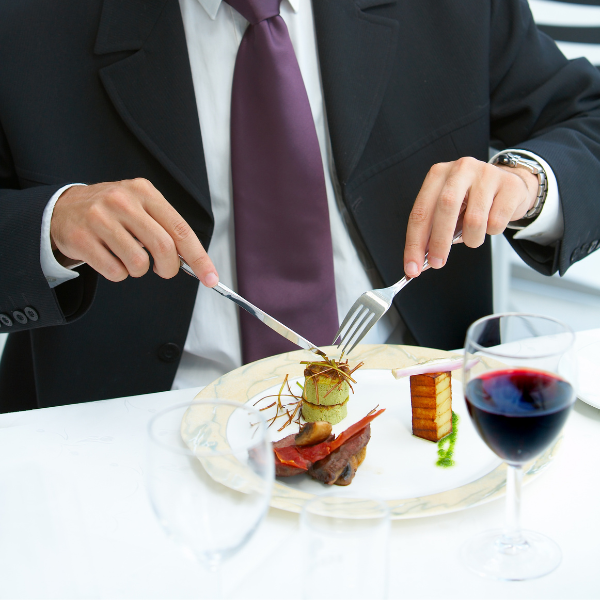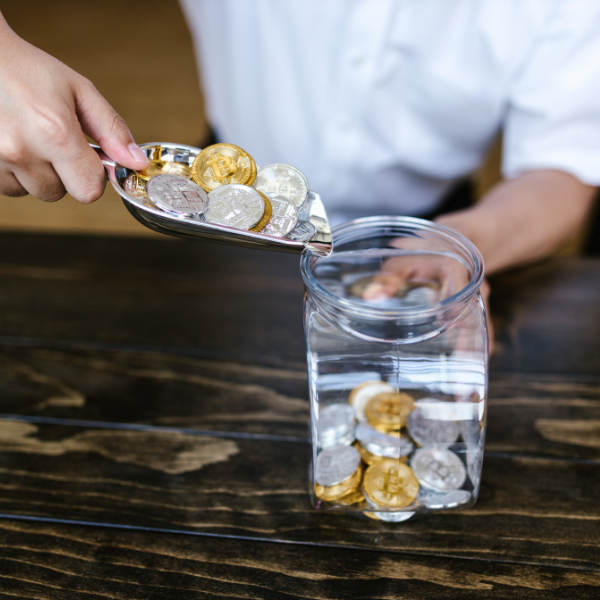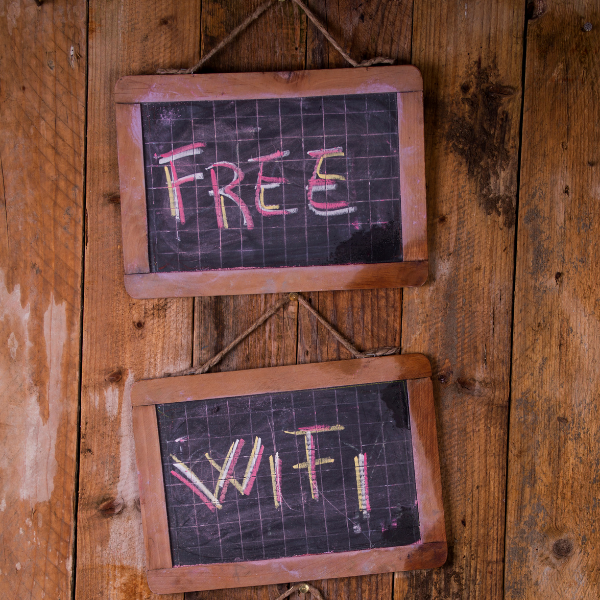A wooden cutting board is a beautiful and functional addition to any kitchen. But like any other kitchen item, it needs to be properly cared for to keep it looking and performing its best. In this detailed guide, we go over numerous tips on how to clean a wooden cutting board so that it lasts you for years to come.
Table of Contents
3 Ways To Clean A Wooden Cutting Board
Wooden cutting boards see a lot of action in the kitchen. They're used for chopping vegetables, slicing meat, and several other ingredients. Over time, cutting boards may become stained and discolored. To keep them looking their best, it's important to clean them regularly. Here are three effective methods for cleaning a wooden cutting board.
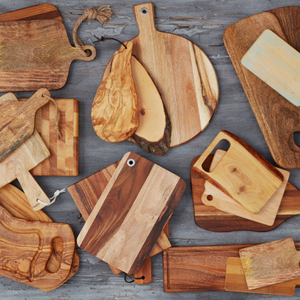
With Soap & Water
The simplest way to clean a wooden cutting board is with soap and water. Just give it a good scrub with a sponge or brush and use hot, soapy water. Be sure to wash both sides of the board and rinse it thoroughly.
With Bleach & Water
If your cutting board has food stains, you can use a bleach and water solution to clean it. Just add one tablespoon of unscented, liquid chlorine bleach to one gallon of water. Either submerge the board in the bleach solution or soak the entire surface of the board with the solution. Let it sit for a few minutes so that it has time to kill any bacteria on the board. Then, rinse it thoroughly with warm water and dish soap to remove any lingering bleach odor.
With Vinegar & Water
Cleaning a wooden cutting board with vinegar is a safe and effective way to remove bacteria and stains. Vinegar is a natural disinfectant that helps restore the wood's natural shine. To clean your cutting board with vinegar, simply mix one part white vinegar with four parts water in a bowl. Then, apply the vinegar mixture to the board and let it sit for a few minutes before rinsing and wiping it down.
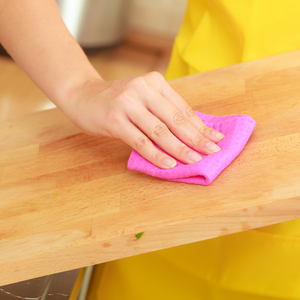
How To Dry A Wooden Cutting Board
A critical step in caring for a wooden board is to dry it properly after each use. Here are some essentials that you must consider:
Paper Towel: Opt for sustainable paper towels for drying your wooden cutting board and other kitchenware. This is every kitchen’s necessity.
Cleaning Cloth: You may also use cleaning cloth for a more sustainable option.
Dish Rack Or Dish Drying Mat: Once it's dry, you can place it upright on your counter, dish rack, or your drying mats. You want to avoid placing the butcher board in direct sunlight, which can cause the wood to crack.
Board Racks: It is important to properly store your wood cutting boards after completely drying it up to maintain cleanliness and maximum durability.
- Wire Shelving Kit: If you have a bigger kitchen, you might want to consider a wire shelving kit for a more organized, efficient, clean and safe storage for your chopping boards and other kitchenware and other kitchen equipment or appliances.
How To Sanitize A Wooden Cutting Board
It's important to sanitize your wooden cutting board regularly, especially if it is used for cutting raw meat. If you do not frequently sanitize your chopping board, it can lead to bacteria building up and cross-contamination. For extra sanitation, especially after cutting meat or fish:
Vinegar Solution: Mix equal parts white vinegar and water. Wipe down the board with this mixture to kill bacteria naturally.
Hydrogen Peroxide: Pour a small amount of hydrogen peroxide over the board, letting it fizz as it disinfects. Rinse well afterward.
Note: Bleach solutions are not recommended for wooden boards, as they can be too harsh on the wood and may leave chemical residue.
How To Remove Odors From A Wooden Cutting Board
If your cutting board is starting to smell, there is an easy way to freshen it up. For cutting boards with lingering odors or stains (such as garlic, onions, or beets), a deeper clean will do the trick:
Salt And Lemon Scrub:
Sprinkle coarse salt (like kosher salt) across the surface.
Use half a lemon to scrub the board in a circular motion. The salt acts as an abrasive, while the lemon helps to remove odors.
Rinse with warm water and dry thoroughly.
Baking Soda Solution:
Create a paste of baking soda and water.
Rub the paste onto the board and let it sit for a few minutes.
Rinse and dry the board to remove any remaining residue and odors.
How To Season A Wooden Cutting Board
Seasoning a wooden cutting board is a simple and effective way to help prolong its life. It needs regular conditioning to stay hydrated, prevent cracking, and maintain a smooth surface:
Choose the Right Oil: Food-grade mineral oil, beeswax, or cutting board oil are ideal choices.
How to Apply: Pour a small amount of oil onto the board and rub it in with a soft cloth in circular motions. Let it soak in for a few hours or overnight, then wipe off any excess.
- Frequency: Apply oil at least once a month or whenever the board looks dry.
How To Repair A Damaged Wooden Cutting Board
If your cutting board is damaged, there are a couple of easy ways to repair it. For minor scratches and gouges, you can simply rub the board's surfaces with food-grade mineral oil or beeswax.
For deep cuts or large gouges, you will need to complete several rounds of sanding. It's recommended to start with coarse-grit sandpaper and work toward a finer-grit one. It's essential to sand both sides of your board, even if one side doesn't have as much damage as the other, so that each surface receives the same treatment. Sanding both sides makes the board less prone to warping. After sanding a wooden chopping board, you should oil it to help smoothen the surface and maintain its appearance.
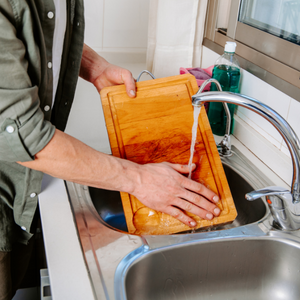
Mistakes To Avoid When Washing A Wooden Cutting Board
With proper care, your cutting board can last for many years. However, there are some common mistakes that people make when cleaning their wooden cutting boards that can damage the board and shorten its lifespan. Here are some things to avoid when washing your wooden butcher board:
- Don't lay a wet cutting board on its surface as it can trap and lock in excess moisture, leading to bacteria buildup.
- Don't let the board soak in water for extended periods of time because it can cause swelling and cracking.
- Don't put the board in the dishwasher as it can cause the wood to swell, which separates fibers and creates cracks.
- Don’t let stains go untreated because they become more challenging to remove over time.
- Don't expose the board to excessive moisture or heat as it can cause the wood to warp.
Additional Tips for Wooden Cutting Board Care
Rotate Usage: Alternate the sides you use to keep wear even.
Use for Appropriate Foods: Try to use separate boards for meat and produce to avoid cross-contamination.
Avoid Extreme Temperatures: Never place a hot pan on your wooden board, as heat can cause the wood to warp or crack.
Kitchen Cleaning Checklist: What To Clean Daily, Weekly, & Monthly
Incorporating cutting board care into a comprehensive kitchen cleaning routine keeps your workspace sanitary and welcoming. Here’s a breakdown to make it easy:
Daily Tasks
Clean and dry cutting board after each use.
Wipe down countertops, stovetops, and kitchen sink.
Empty trash bins and replace liners.
Weekly Tasks
Deep-clean cutting board if frequently used.
Wipe down cabinet doors and appliances.
Sanitize high-touch areas (like handles and knobs).
Sweep and mop floors.
Monthly Tasks
Oil and condition the cutting board.
Clean the inside of the refrigerator and cabinets.
Wash exhaust fan filters.
Wipe down light fixtures and hard-to-reach areas.
Choosing the Best Wooden Cutting Board
When preparing for slicing fish and vegetables, especially delicate food like sushi, it’s crucial to have a cutting board that complements it. The best cutting board for sushi should ideally have these qualities:
Non-Porous Surface: Minimizes bacteria growth and is easier to sanitize.
Smooth Texture: Prevents knife marks and allows for precise slicing, which is crucial in sushi prep.
- Types: Woods like hinoki or maple are popular for sushi due to their fine grain and antibacterial properties.
Keep Your Cutting Board Looking New!
By integrating cutting board care into your kitchen cleaning checklist, you’re not only preserving your board’s exceptional appearance and durability but also maintaining a healthy, organized cooking environment that enhances your kitchen experience. A well-cared-for wooden cutting board reflects dedication to quality and cleanliness, essential for both daily meals and special food preparations.
With some tender love and care, weekly deep-cleaning to prevent stains and odors, and monthly oiling to protect the wood, your cutting board will remain a beautiful, functional part of your kitchen for years. Embracing these habits can transform routine cleaning into a mindful ritual that elevates the ambiance of your kitchen. Happy cooking!






